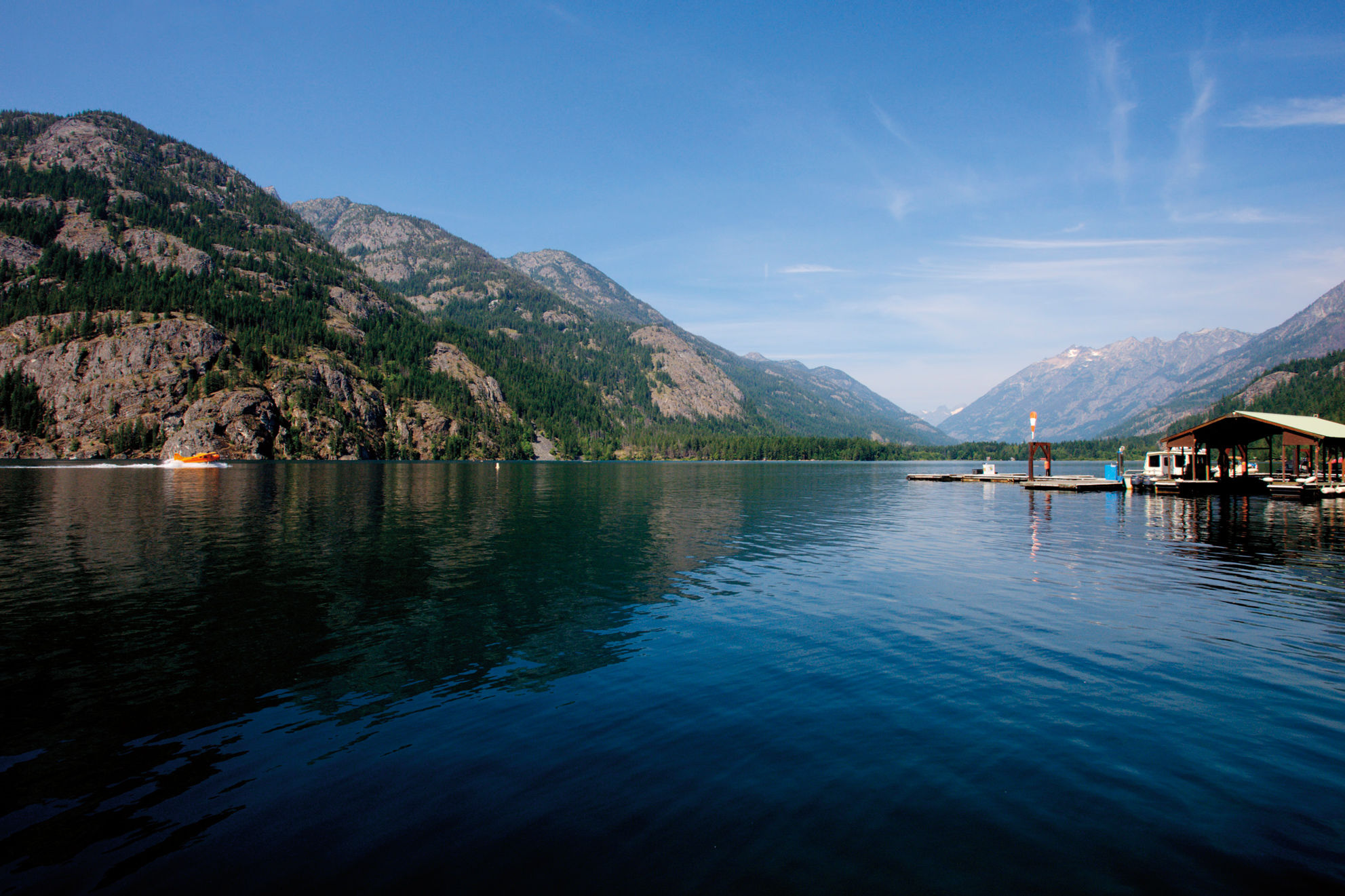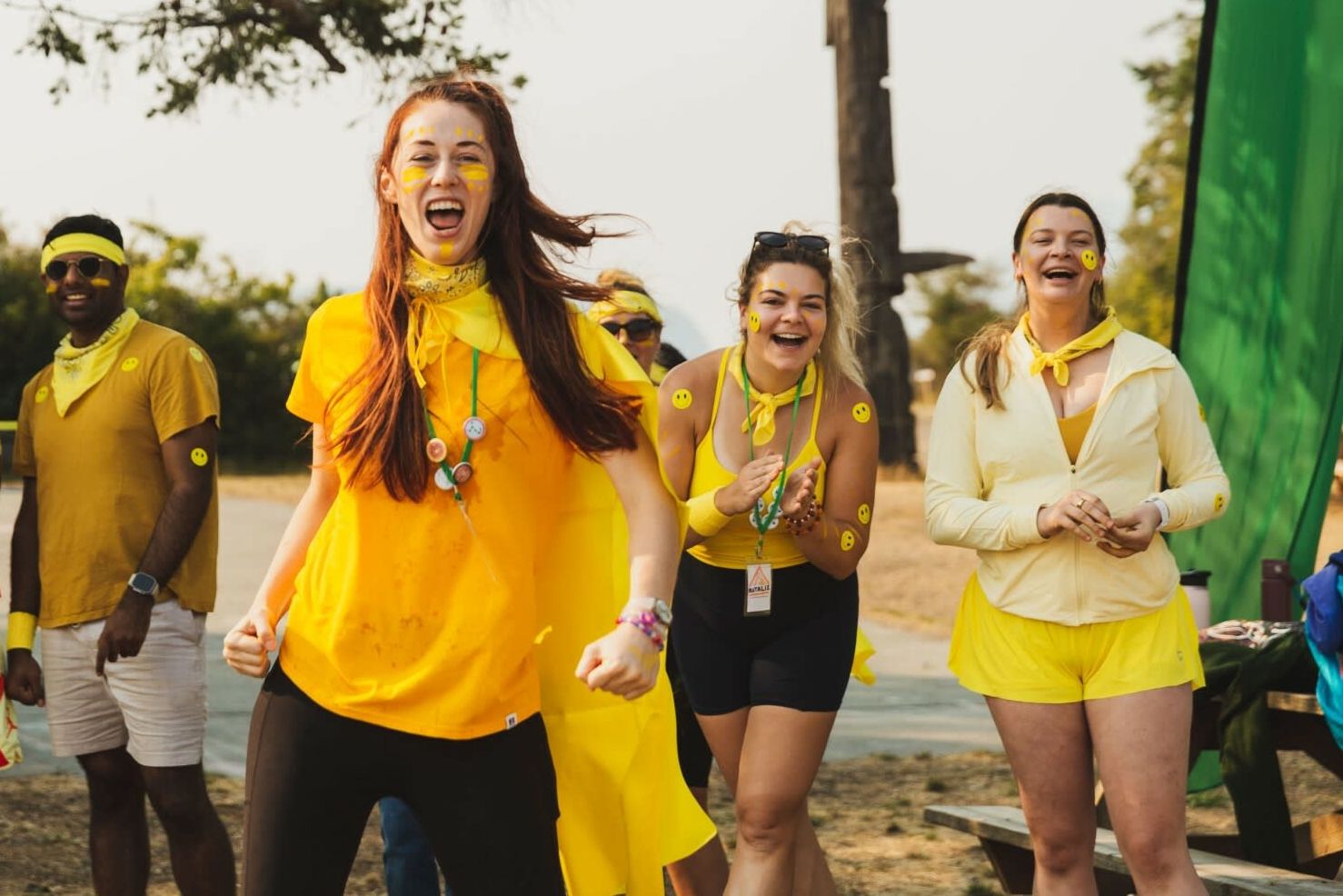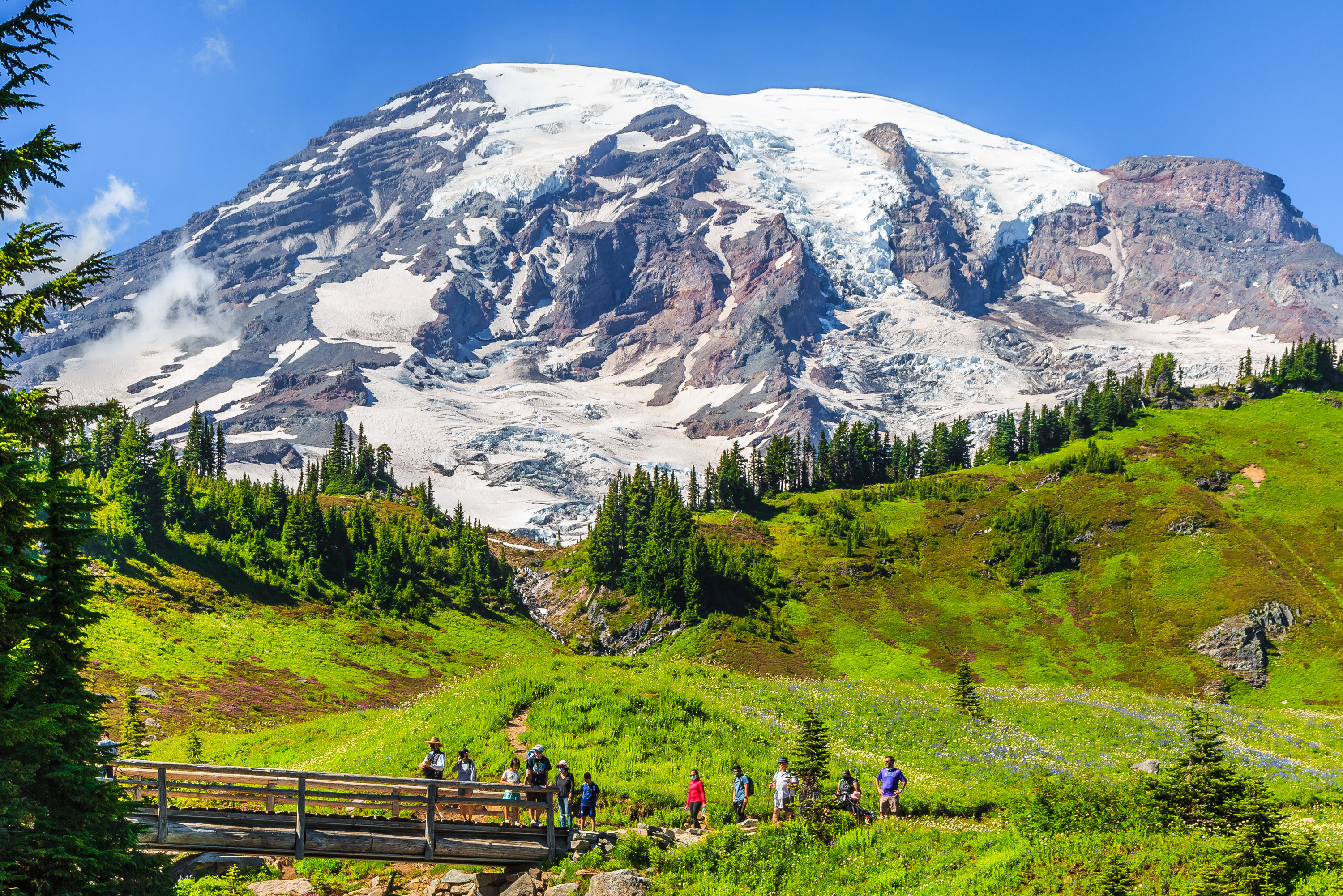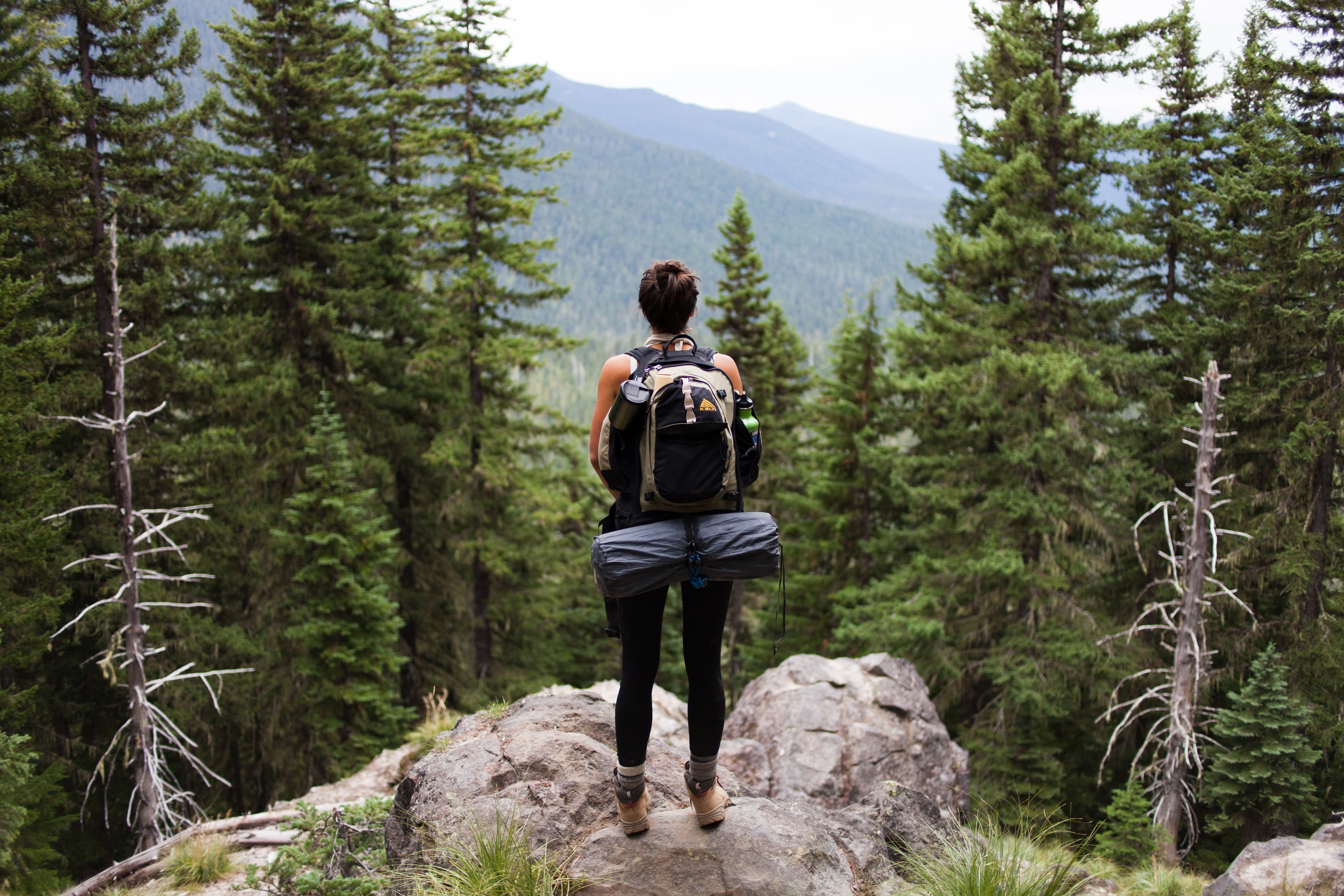
How to Plan Your First Backpacking Trip in Washington
Backpacking in Gifford Pinchot National Forest. Photograph by Nolan Calisch.
Backpacking is a special brand of camping. This isn't parking a car and pulling out a cooler—backpacking means carrying everything you might need and hitting the trail, ending up miles away from paved roads and flush toilets and even other people. It means a night among Washington alpine lakes and old-growth forest, midnight views of the Milky Way and coffee with the wildflowers. And the best part: It's possible for everyone.
Select the season
Believe it or not, we backpack year-round in the Northwest. While summer is the undisputed peak season for strapping on a Wild-sized pack, hardy adventurers brave the spring rains and camp among the autumn colors. Snow camping, with its spectacular nights and cozy down layers, turns winter into its own special season. (Check out our guide on how to love it.)
When choosing a backpacking vacation window, consider the weather. Pacific Northwest nights are cold, and it gets chillier the higher the elevation (especially into mountains). Track temperatures at the National Weather Service website and check snow levels on SNOTEL. Another good way to gauge recent conditions: Check trip reports for each destination at Washington Trails Association.
Any time of year, remember that a big trip doesn't have to mean big mileage. With more gear in the pack, even short hikes can feel like a workout. Our Search and Rescue community is strong (even for animals!), but the best trips don't require calling them in.
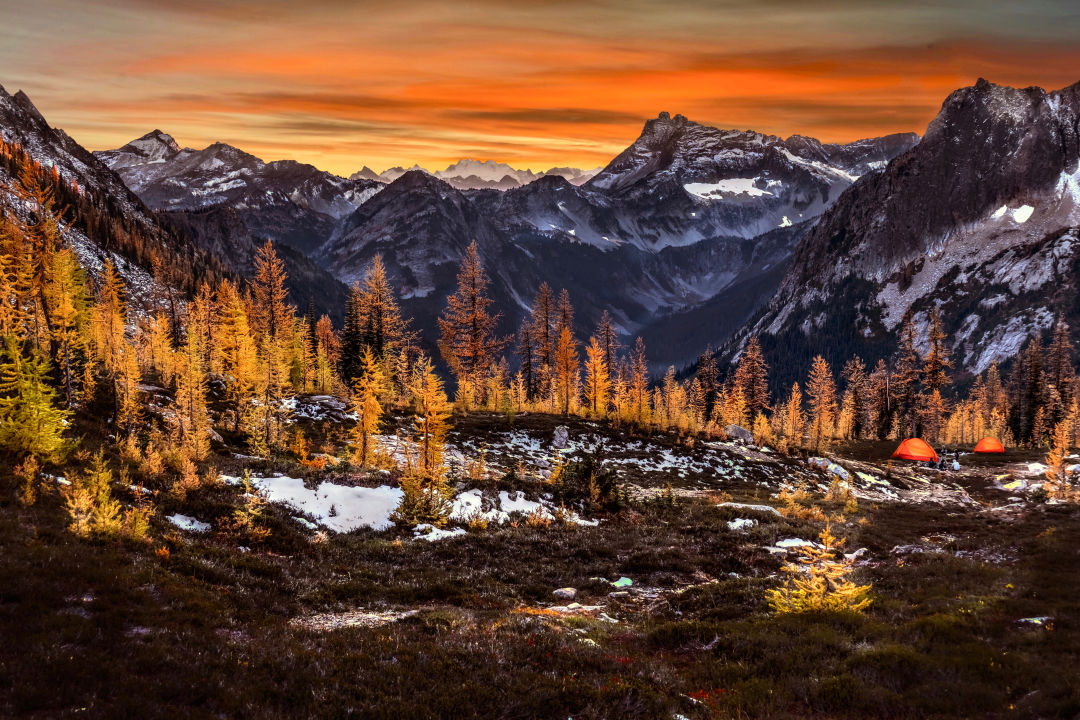
The North Cascades shows off its autumn colors.
Claim the campsite
Car camping isn't the only form of outdoorsing that requires a reservation. Many spots across the Northwest fall under a permit-use area, and some restrict the number issued. Rule of thumb: If it's in a national park (Rainier, Olympic, or North Cascades), the backpacking trip probably requires advance booking. The Enchantments area, a beautiful expanse of mountain lakes near Leavenworth, is also carefully controlled. Reservations are arranged through Recreation.gov.
That still leaves thousands of miles of trails and unlimited spots for unreserved, non-permitted backpacking. Often all that is required is a parking pass at the trailhead, but there are still rules: Leave No Trace, a framework for enjoying the outdoors without harming the natural world, outlines how to camp on durable surfaces.
Gather the gear
And you thought regular camping was expensive. Specialized backpacking gear, light and compact enough to be carried, can easily run into the thousands of dollars—and some of the very best outdoor equipment is made right here in Seattle by companies like Therm-a-Rest and Feathered Friends. To start, focus on the basics: tent, sleeping bag and sleeping pad, backpack, and stove.
But there are many roads to acquiring backpacking stuff without paying full price (or even shopping the sale racks at our favorite outdoor shops). Rent from a number of local stores and organizations; as a bonus, beginners can try things out in the field before buying for themselves.
Backpackers can make do with substitutions and workarounds for almost every piece of gear—except food storage. Some national parks require specialized bear canisters (which they rent, as do local stores) to keep animals from accessing important rations; check with rangers or national park websites for more. Proper food storage is necessary in all backcountry campsites, though; bears aren't the only ones who can ruin a trip—the mice, foxes, and raccoons can be equally destructive.
Find the friends and source some skills
As we covered in our first-timer camping guide, there are many ways to find outdoor partners around Seattle—and some will even go backpacking with you. Even better, students of backpacking courses at the Mountaineers or guided company Kaf Adventures emerge with the ability to plan trips themselves; Cascade Mountain Adventures holds backpacking intensives for women (including snow camping expeditions).
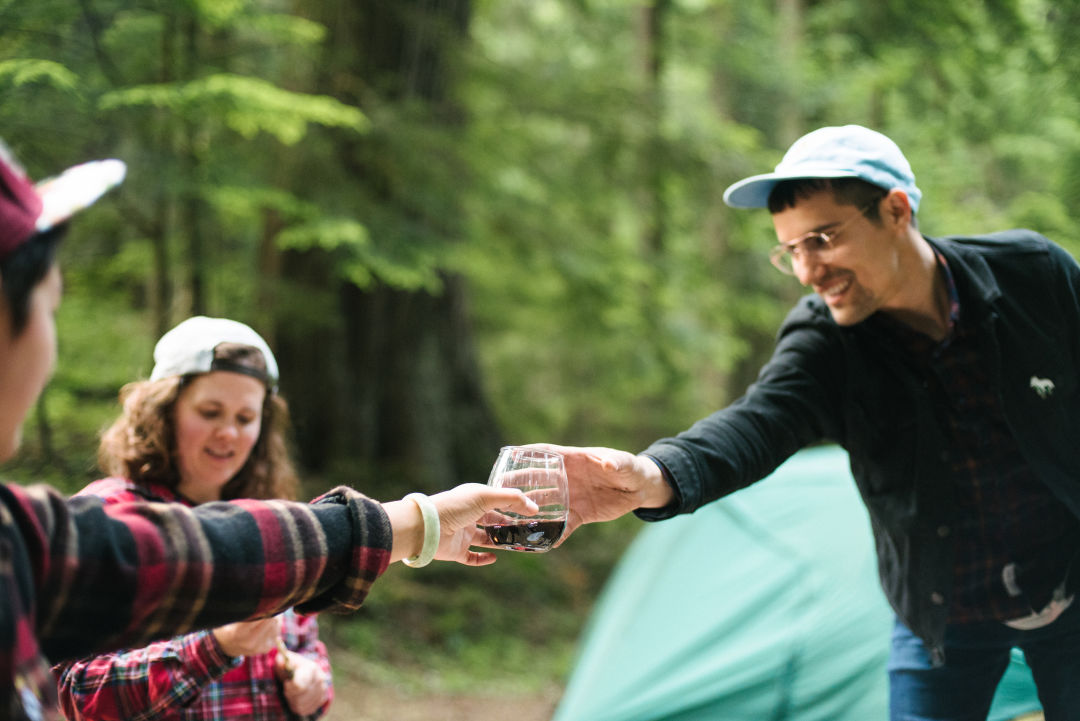
Backpacking essentials are whatever you say they are.
Plan the pastimes
Just finding and setting up a backpacking site is a lot of work—don't worry too much about getting bored. But it also doesn't hurt to throw in a deck of cards or a flower identification app. Or score the perfect starlight photo—Mountaineers Books has a whole tome devoted to capturing nighttime scenes. Oh, and don't forget the most important backpacking activity of them all, going to the bathroom; REI and Leave No Trace have you covered.
